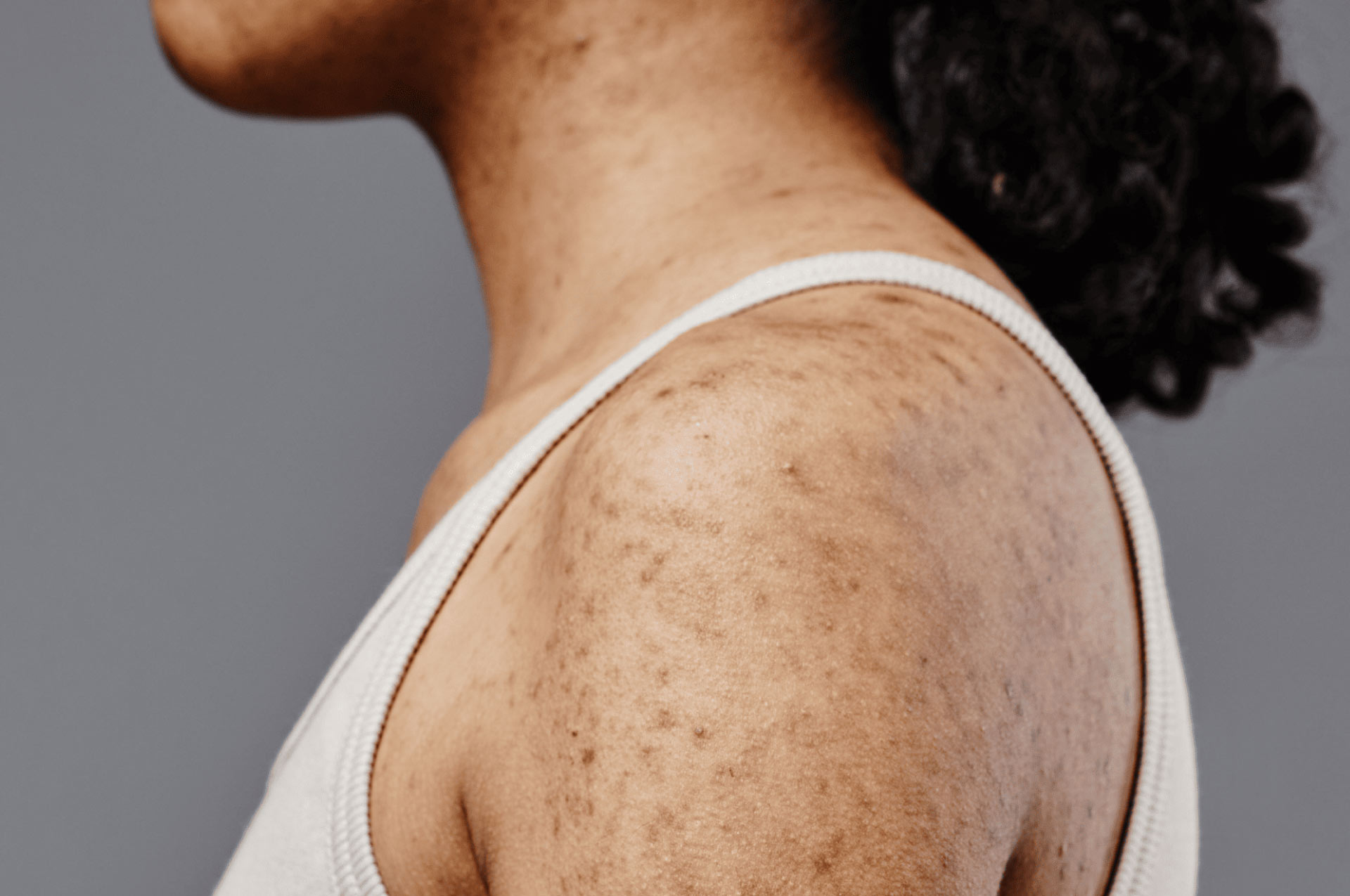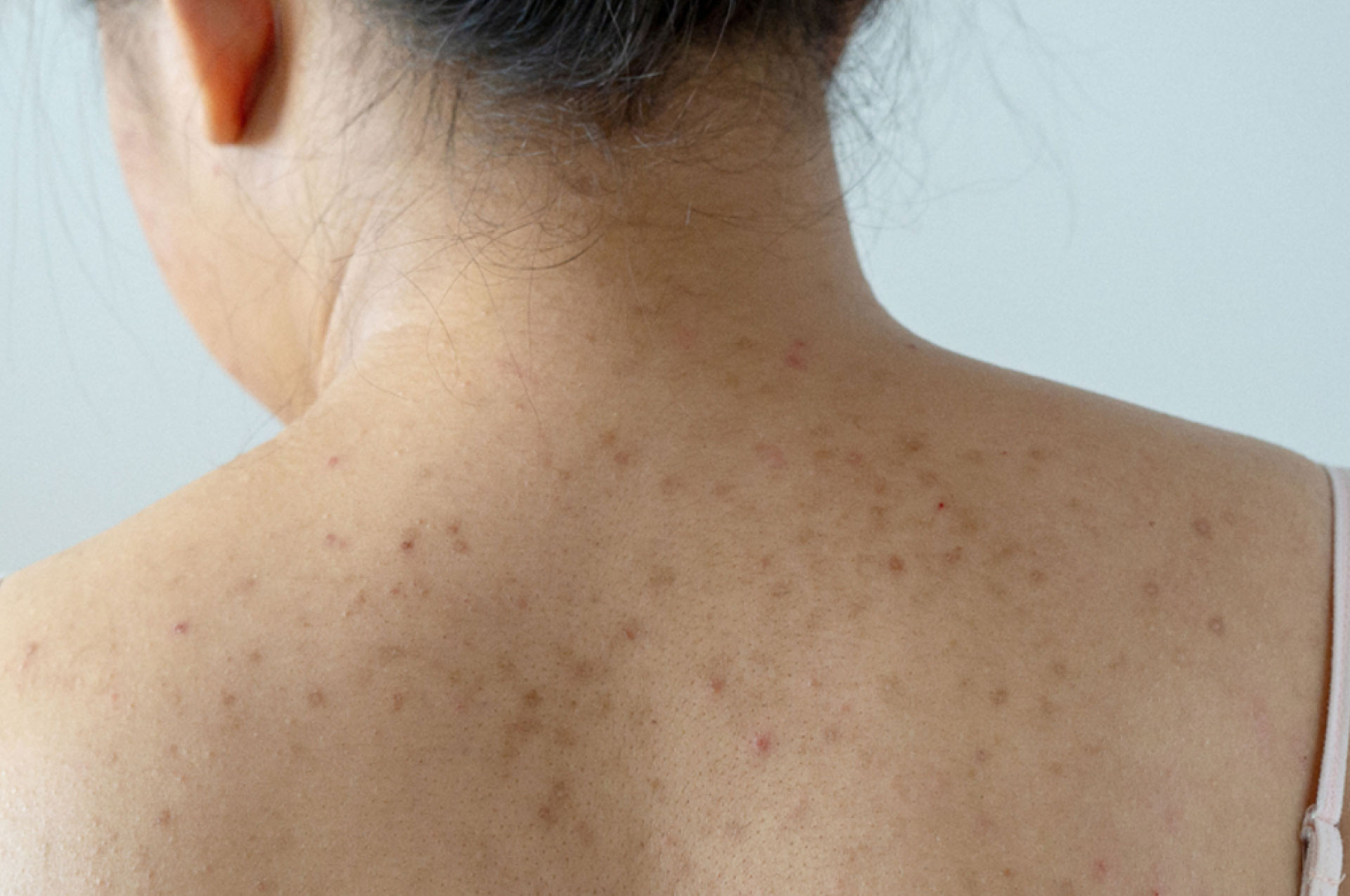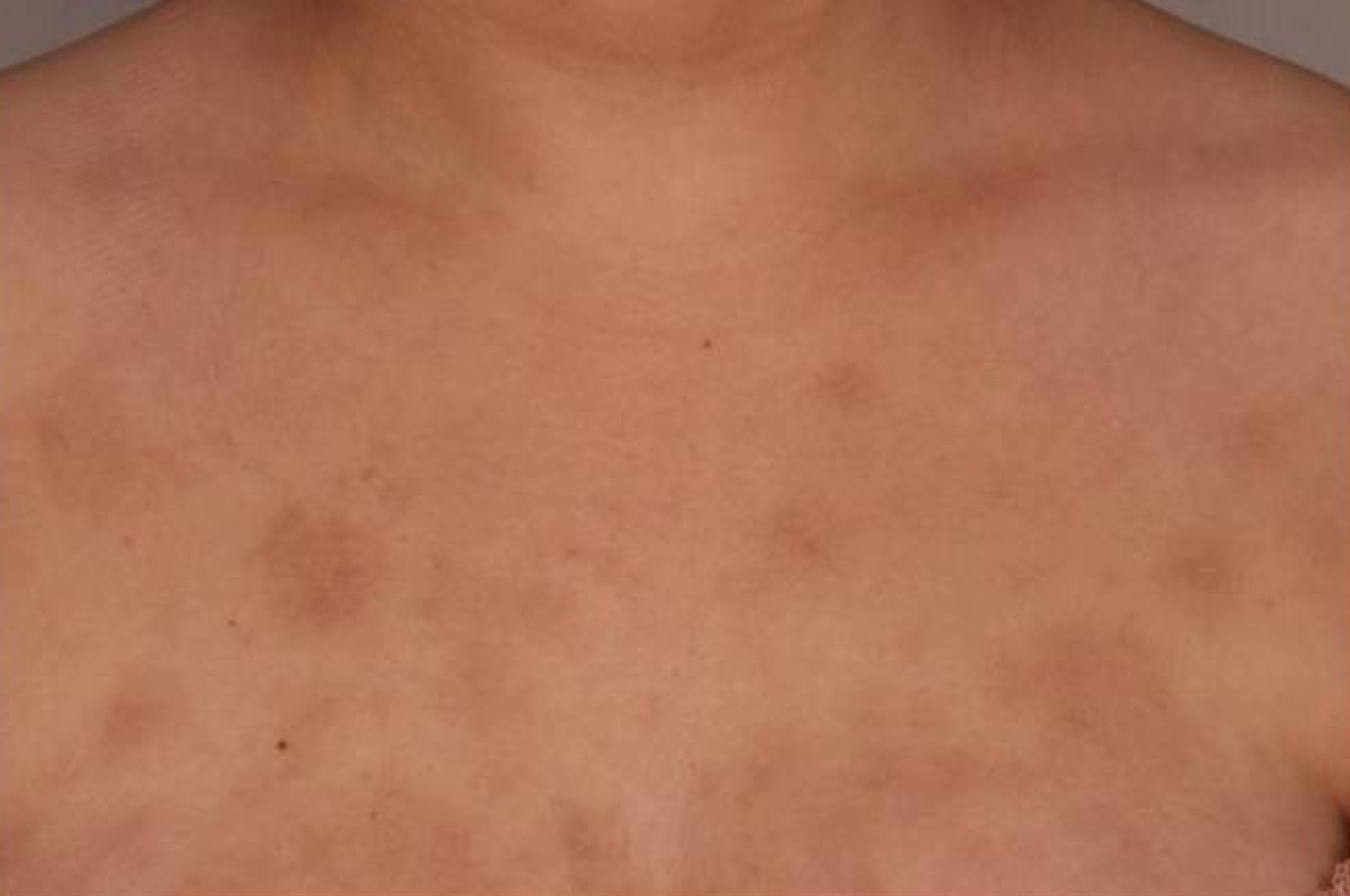


A chronic condition characterized by a redness of the skin that resembles sunburn. It also may cause enlarged blood vessels and small, pus-filled bumps. Some symptoms may flare for weeks to months and then go away for a while.
Rosacea can be mistaken for acne, dermatitis or other skin problems.
1- Erythematotelangiectatic Rosacea: Characterized by persistent redness on the face. Small blood vessels beneath the skin surface may become enlarged and visible; these symptoms often flare up and then disappear. Without treatment, the redness can get more persistent, cover more skin, and even become permanent.
2-Papulopustular Rosacea: Associated with “whitehead” pustules, which are pus-filled blemishes, and red, swollen bumps. These typically appear on the cheeks, chin, and forehead and are frequently misidentified as acne.
3- Phymatous Rosacea: This type of rosacea causes skin to thicken and scar, making it bumpy, swollen, and sometimes discolored. This rare but treatable type most often affects the nose. It appears more frequently in men than in women.
4- Ocular Rosacea: In ocular rosacea, symptoms affect the eyes, causing them to look watery or bloodshot. There may be an associated feeling of burning or irritation in your eyes. Ocular rosacea can cause persistently dry and sensitive eyes.
Rosacea is a skin condition that has no treatment but you could avoid rosacea flare-ups by avoiding known triggers like:
-Exposure for sunlight
-Stress
-Heat
-Spicy foods
As for skincare products, avoid using harsh chemicals on your skin like:
SLS (sodium lauryl sulfate), menthol, heavily-perfumed products, products with high alcohol content, peppermint, eucalyptus oil and witch hazel.
Opt for fragrance-free products
Do a patch test on the neck or your inner arm before using a new product.
Use minimal products.